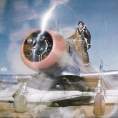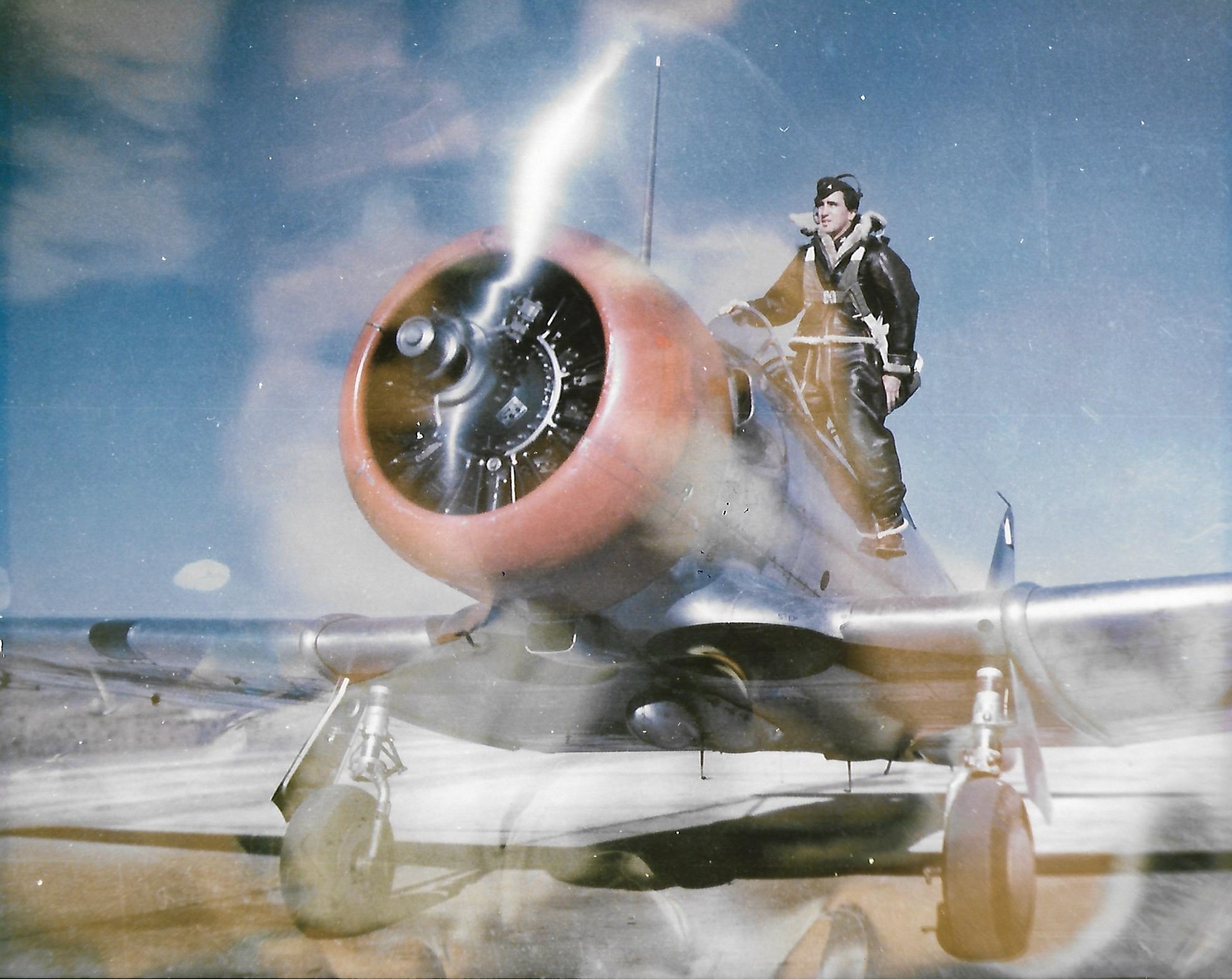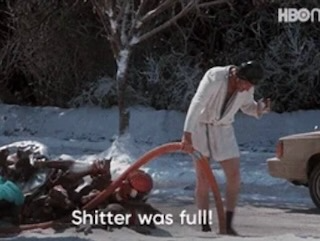-
Posts
4,087 -
Joined
-
Last visited
-
Days Won
28
Content Type
Profiles
Forums
Blogs
Gallery
Downloads
Events
Store
Everything posted by GeeBee
-
I arrived at my plane today and it was 18 degrees. So I put in the plate. I liked the way the airplane warmed up with it. Obviously it warmed faster but it stabilized quickly. Oil got right up to 180 and stayed there. Takeoff routine and after an hour or so at -10 oil went as low as 177 and as high as 183, but it was stable. It was too cold to run LOP. Landing temp was 37 but the oil stayed stable at around 177 to 180. I will use the plate again in cold temps, I think the engine is more stable thermally.
-

98 Mooney Ovation - Pushrod Tube Oil Leak.... Not Good
GeeBee replied to Dustoff49's topic in Modern Mooney Discussion
To follow up, for the push rods themselves to be damaged that extensively, two of them no less, it is more than a slipped wrench. Nobody should leave an engine on the hoist that long and to do so is poor work habit. That engine was set down on something, and it bent those tubes and rods. -

98 Mooney Ovation - Pushrod Tube Oil Leak.... Not Good
GeeBee replied to Dustoff49's topic in Modern Mooney Discussion
I always wait for "the other shoe to drop" when maintenance is performed by an unfamiliar shop,,,,and it usually does. You just hope it does not kill you. Recently I had some tank work performed and the shop emptied the tank with the electric pump. I told them not to let it run dry but I am sure they did because I arrived at the hangar the other day, one day before a fly out to find fuel leaking from the tell tale fitting on the belly. Fed-Ex'd a new pump out from AirPower but of course despite paying for first in the morning delivery it did not arrive until noon. That made it impossible to depart on time. My personal mechanic the one I trust implicitly, dropped everything to get me going but I still ended up departing a day late which is not really too bad. My wallet is 2500 dollars lighter for the experience. Anyway it is a long way of saying it seems these days, there is a lot of maintenance induced failures that really are unnecessary if people were more conscientious in their work and inspection habits. I don't know why that is so hard. -

Windows UV protection and GA in General
GeeBee replied to Schllc's topic in Modern Mooney Discussion
I can tell you from experience, of late the left side of my face (because I spent years in the left seat) has seen more knives than Benihana. (RIP Joan Rivers). Most that time was spent behind very think multilayer jet windshields. I'v also had colleagues with skin cancer on the left side including melanoma on the left arms. I'm on the 6 month plan with my dermatologist. I tell him I am a walking scholarship for his kids. -
Yes, I have the Deuce. Owned it for 13 years. Not a lick of trouble and I run it continuously in the winter.
-
Aerotherm is the bomb.
-
Yes, experimental means it may not be installed by a licensed mechanic and thus no assurance that the propeller has been treated properly in installation, operation or removal. Sucks but I am sure they have been burned before.
-
For my R model is says remove it above 30 degrees. It does not say when it needs to be installed as it is optional except the AFM says: For engine operation at outside air temperatures below - 25oC (- 13oF), the engine and engine oil should be preheated to at least - 25oC (- 13oF) before the engine is started. Continental says you need to pre-heat when below 20 degrees F for more than two hours. Lycoming says: Engine operating temperature is another item that is not usually given enough consideration in cold weather. We usually are very cautious about high oil temperature which we know is detrimental to good engine health, while a low oil temperature is easier to accept. The desired oil temperature range for Lycoming engines is from 165˚ to 220˚ F. If the aircraft has a winterization kit, it should be installed when operating in outside air temperatures (OAT) that are below the 40˚ to 45˚ F range. If no winterization kit is supplied and the engine is not equipped with a thermostatic bypass valve, it may be necessary to improvise a means of blocking off a portion of the airflow to the oil cooler. Keeping the oil temperature above the minimum recommended temperature is a factor in engine longevity. Low operating temperatures do not vaporize the moisture that collects in the oil as the engine breathes damp air for normal combustion. When minimum recommended oil temperatures are not maintained, oil should be changed more frequently than the normally recommended 50-hour change cycle. This is necessary in order to eliminate the moisture that collects and contaminates the oil.
-
Yes, I usually hangar, preflight and tow out my real concern was what happens when I arrive in the warm weather with the plate still in. As to the oil, I have heard those concerns but I ran a fleet of C-402's with never a problem with starter adapters or anything else on Aeroshell 15W-50. I know the "small sump" syndrome on the IO-550 but I rarely take the oil beyond 40 hours. What many including Savvy do not understand is all multi-viscosity oils are semi-synthetic including Phillips 20W-50, they just don't state it. They have to be by definition of the manufacturing process.
-
I have a mission that requires start up at 22 degrees F and landing at 46 degrees F. I will keep the airplane in a pre-heated hangar before start up. I have a factory installed winterization kit so I can install an oil cooler block off plate before departure. The AFM says I need to remove above 30 degrees. Can I safely fly the entire flight with the plate installed. I will be cruising around 10K and I am running 15W-50 oil.
-
Well sort of if you trace the lineage https://avweb.com/aviation-news/daher-completes-flight-tbm-platform-drone/?oly_enc_id=5912C9519189D2Y
-

Landing Clearance Reminder Technique
GeeBee replied to Lax291's topic in Miscellaneous Aviation Talk
This is from the Chief of the ATL tower. "If we don't clear you to land, bring it on in, we know you are coming". I was a little taken aback but one day I was at DFW, the tower controller was talking a mile a minute. Could not get a word in edgewise. I could see she was having a/c hold short of the runway I was lining up on and it was VMC with the runway totally clear. I went ahead and landed. As I was rolling out she said, "Thank you soooo much, turn right contact ground". Would I do that CAT III? No, but under those conditions, the frequency is relatively quiet. The fact is, a go around usually sparks some paper work for the tower that they don't want to do unless you initiated the go around for your own reason such as training. If they forget to clear you to land, and you go around, that's on them and they don't like paperwork anymore than you do. -
Think of it this way. We operate across borders all the time in aviation. I have about several foreign registrations in my logbook, the most common "EI" even though I flew for a US air carrier.
-
If that were all true, all guns in a gun vault would rust away from the use of heating elements, but they don't. Aviation Consumer discovered this, so did American Bonanza Society. I keep my engine continuously heated with an AeroTherm Deuce to 70 degrees with no problems https://www.reiffpreheat.com/Article-Fiorentini-ContinuousPreheating.pdf
-
First of all it was an Airbus A330. Second, I had just blocked in from crossing the North Atlantic soooooo, the accumulator was charged, really charged.
-
On some airplanes, airliners in particular if you just chock the nose wheel, the weight on the nose wheel becomes very light during disembarkation, because the airplane unloads front to back. Eventually the airplane can jump the nose wheel chock. King Airs, especially the 200 series and up can also do it very easily.
-
Oh yeah, I got a chocks in signal from the ramp guy once, but they chocked only the nose wheel. When it jumped the chock, 300,000 pound wide body went rolling downhill towards another wide body behind it. Thank God I was able to jump into the seat and stop it with accumulator brake pressure. Even a Mooney size airplane once it starts rolling is difficult to stop with anything other than brakes.
-
Better to forget to remove them than forget to insert them and have the airplane roll.
-
The wording is suspect. "will bring new production aircraft from January 2026". Bad sentence syntax and I suspect someone who has English as a second language (most likely in China) is attempting a play of some kind.
-
https://www.westmarine.com/starlink-mini-kit-21194634.html?j=2242086&sfmc_sub=38262327&l=174_HTML&u=88009073&mid=514006769&jb=23026&p=&utm_source=sfmc&utm_term=&utm_medium=em_mktg&utm_campaign=251126-NAT_Black_Friday_Cats-AM&utm_id=2242086&sfmc_id=38262327&sfmc_conv=1&j=2242086&sfmc_sub=38262327&l=174_HTML&u=88009073&mid=514006769&jb=23026
-
AKA, "The sanity check"
-
But have you had to land because someone forgot to go to before departure?
-
Sort of particular to a Mooney. Go before you go. Make sure your passengers go before you go. No matter how fast or high we go the entire operation is slaved to bowels and bladders. Nothing worse than settling down on a long flight someone saying: On airliners, I've seen airborne returns for failure to preflight the waste tanks at great cost to company and passengers.
-
Gear pins. Seen it twice. Causes airborne returns The most unusual was a pax window plug left in by maintenance. Blew out at 6000’ from the pressure load. Poor F/O who did the walkaround had to do a complete requalification. My rule on GA IS always go to the front of the a/c before getting in and do “sanity check”
-

Ly-Con options on IO-360-A1A Overhaul
GeeBee replied to Vance Harral's topic in Vintage Mooneys (pre-J models)
I had an O-320B2B (160 hp) ported and polished by Gann along with the case seal, main dowels etc. The thing was a monster. It turned 173 on the dyno and ran like a top. Look, it takes a lot of power to increase speed as it is a square function but rate of climb is directly related. Having a 10% increase in rate of climb is not insignificant.






